When it comes to paid digital advertising, bidding plays a pivotal role. It determines the success of your campaigns and how effectively you spend your budget.
After all, it determines how much money you need to spend on your ads. In this regard, the ad spend is a significant investment for any online business. That is why most companies seek to maximise their returns on such an investment, which can ultimately help the company to grow.
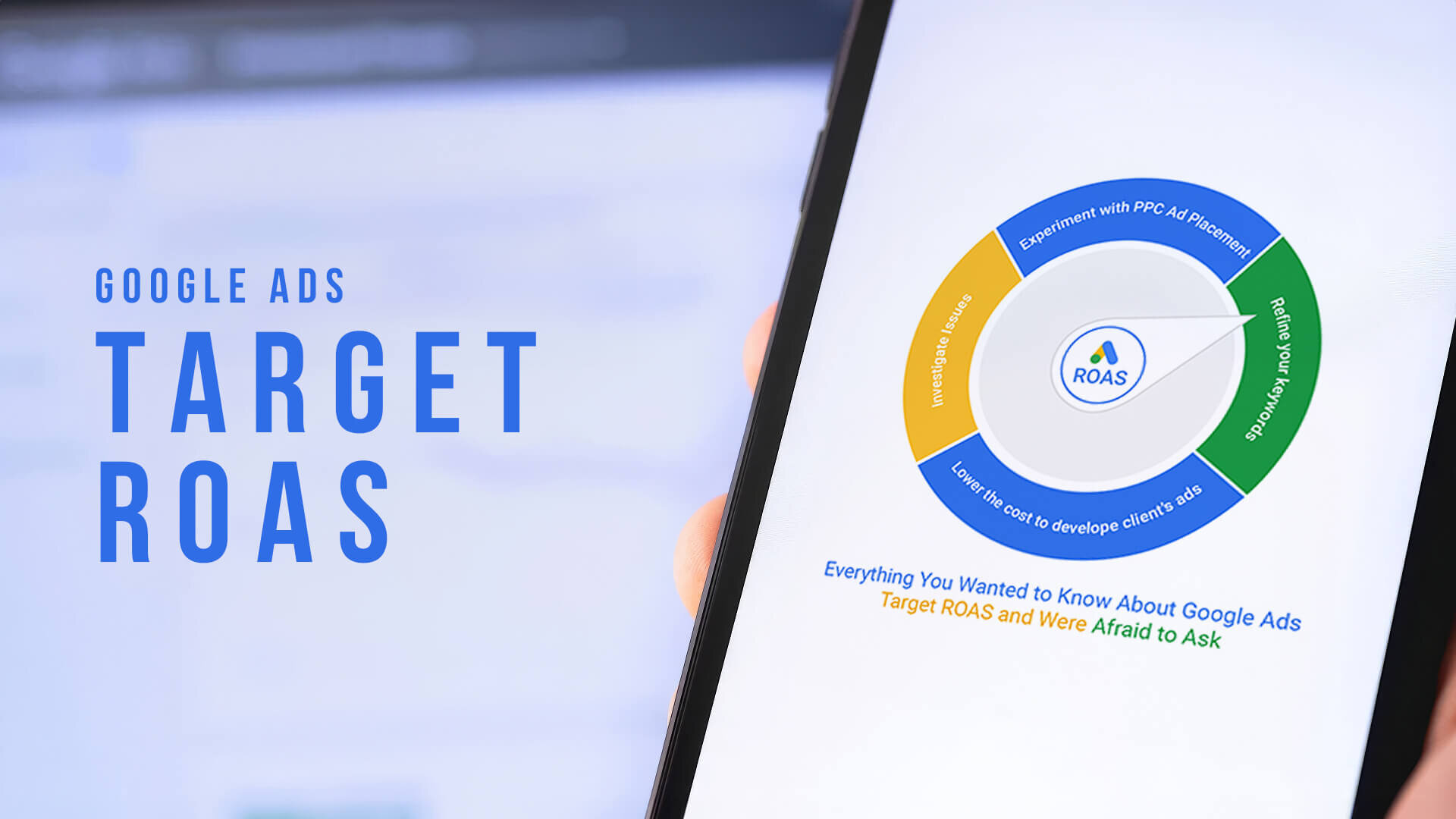
That’s where strategies like Target ROAS step in, helping advertisers boost their ad spend returns. If you’re a business owner wanting to maximise your investments, keep reading to learn how Target ROAS can work for you.
Want to receive updates? Sign up to our newsletter
Each time a new blog is posted, you’ll receive a notification, it’s really that simple.
Understanding Target ROAS Bid Strategy
Before discussing the Target ROAS bid strategy, let us give you a brief idea of what ROAS implies. Return on Ad Spend, or ROAS, is the digital marketing equivalent of Return on Investment (ROI). It is a key performance metric in any business, determining the efficiency of financial investments. A high ROI naturally implies that a company’s investments are highly profitable and vice versa.
On the same note, ROAS measures the brand’s profitability concerning the money spent on online paid ads. So, if your ads can generate revenues greater than what you spend on creating them, then your business will have a high ROAS. On the other hand, if the online ads you create are unable to generate enough profits, then your ROAS will be adversely affected.
The Target ROAS bidding strategy, often shortened to “tROAS”, is one of the smart bidding strategies that Google implements. Smart bidding strategies use a unique feature known as “auction-time bidding.”
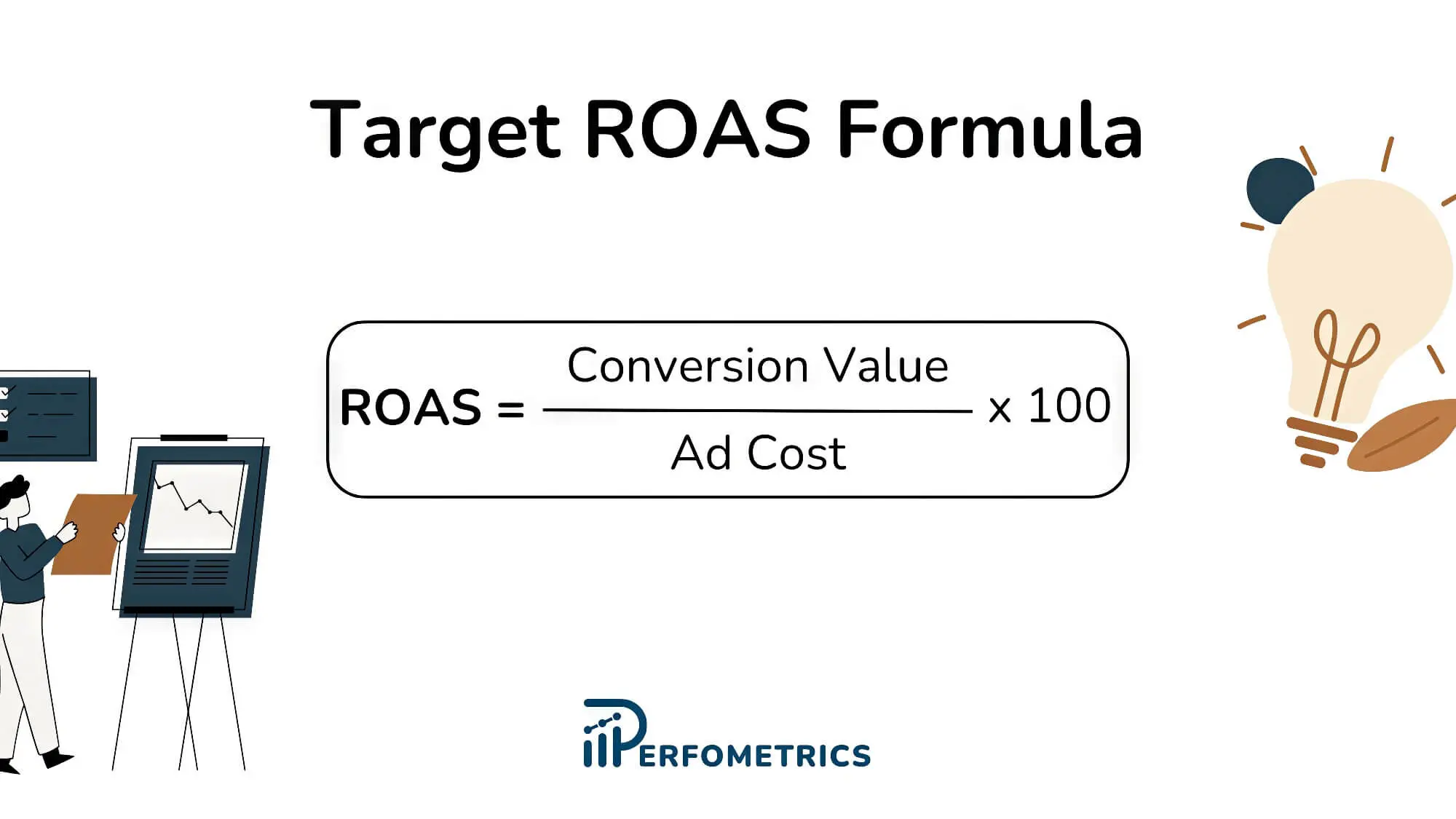
In this feature, the bid strategies use Google’s advanced AI algorithms to improve auction efficiency. The AI is designed to optimise for maximum conversion or conversion value in any auction, providing advertisers with a lucrative opportunity.
Additionally, smart bidding strategies like Target ROAS are completely automated, which is quite handy for business owners. Google states that when users search for your advertised products or services, Target ROAS evaluates and predicts conversion values automatically.
Based on this analysis, it adjusts the bids placed on these searches accordingly so that you can get maximum returns on your ads, which is what ROAS is all about.
How Does The Target ROAS Bidding Work
You must enable conversion tracking in your Google Ads account to use this bidding strategy. Based on the conversion values you report through this tracking tool, the Target ROAS strategy will allow Google to adjust the cost-per-interaction bids automatically to maximise your conversions. At the same time, it will maintain an average return on ad spend (ROAS) equal to your specified target.
In simple terms, the Target ROAS bidding strategy aims to maximise the value of each conversion generated through your ads. It does not focus on increasing the number of conversions generated through an ad, though, which means that it basically follows a “quality over quantity” approach.

For example, if you set an ROAS target of 300%, your ads will need to generate three times the amount you spend on them. In other words, spending $1 on an ad needs to generate $3 in revenues from each conversion to meet the target.
This is where the Target ROAS bidding strategy comes into the picture. Based on the ROAS target you have set, it automatically adjusts the maximum limit of CPC bids to reach the specified conversion values.
Target ROAS Vs. Other Smart Bidding Strategies
Since Google provides other smart bidding strategies besides Target ROAS, it is quite natural to compare these options to understand their differences. On that note, Target ROAS is often compared to another similar Smart bidding strategy: Target CPA.
In Target CPA bidding, the bids are adjusted to meet the specified conversion numbers. Simply put, it seeks to gain as many conversions as possible at a given cost. On the other hand, Target ROAS aims to maximise the value of each conversion.
Target CPA is very similar to the Maximise Conversions bidding strategy since both focus on increasing the conversion volume. In contrast, Target ROAS shares some similarities with the Maximise Conversions Value bid strategy, which also focuses on increasing the average value of each conversion.
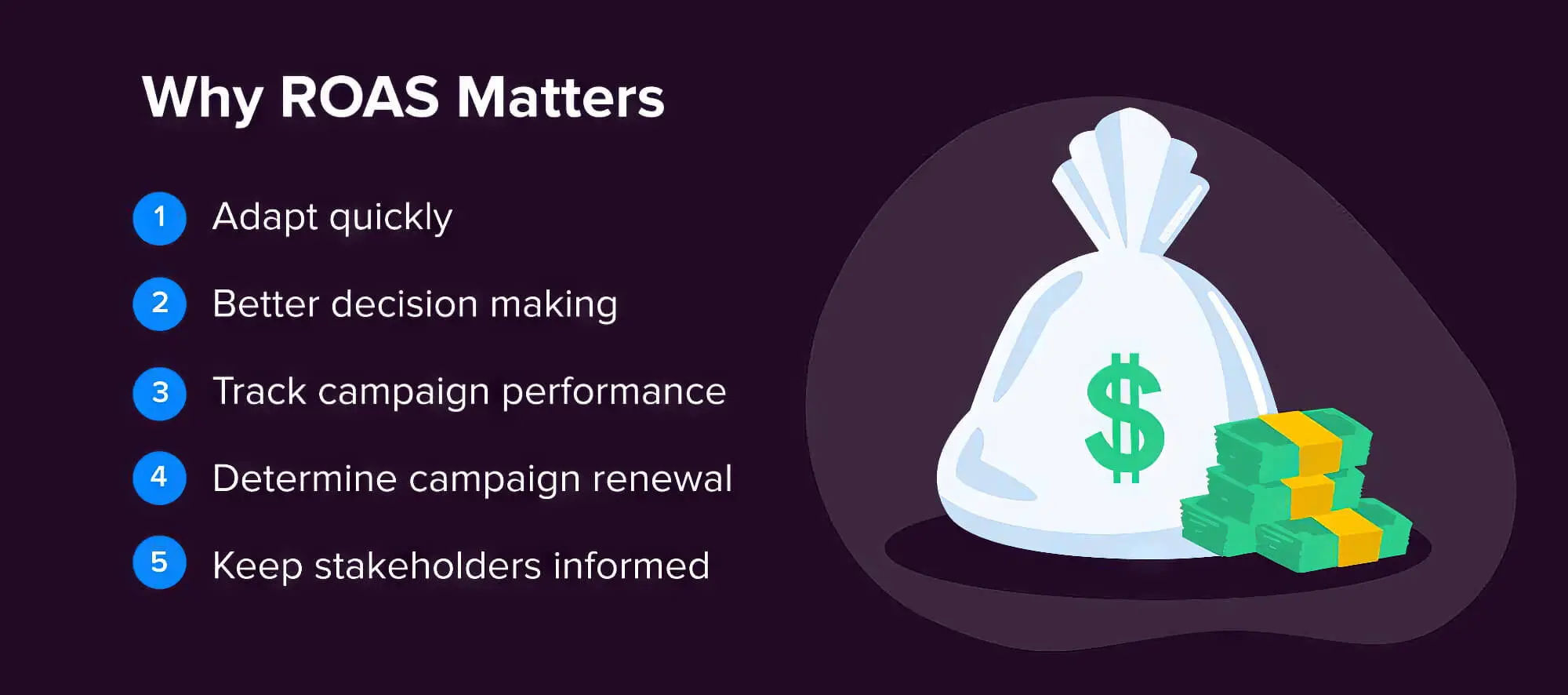
Setting Up A Target ROAS Strategy In Google Ads
You’ve got a few options for setting up a Target ROAS strategy in your Google Ads campaigns. Whether you’re focusing on a single campaign or multiple ones, the steps below will guide you through.
A. Setting Up Target ROAS With A New Campaign
Most marketing experts recommend setting it up while creating a new campaign since that is the most convenient way. While creating a new campaign in your Google Ads account, you will come across a segment that requires you to specify bidding preferences. There, you need to select Target ROAS as the bidding strategy.
B. Setting Up Target ROAS In An Existing Campaign
If you already have an existing ad campaign and want to change its bidding strategy to Target ROAS, you can do so from the settings menu. First, select the campaign in your Google Ads account whose bidding strategy you want to change. Then, select “Settings” from the menu on the left to reveal the different campaign settings.
From there, navigate to the “Bidding” segment and click “Change bid strategy”. Select “Target ROAS” from the menu, and specify the target value for the ROAS you want to use.
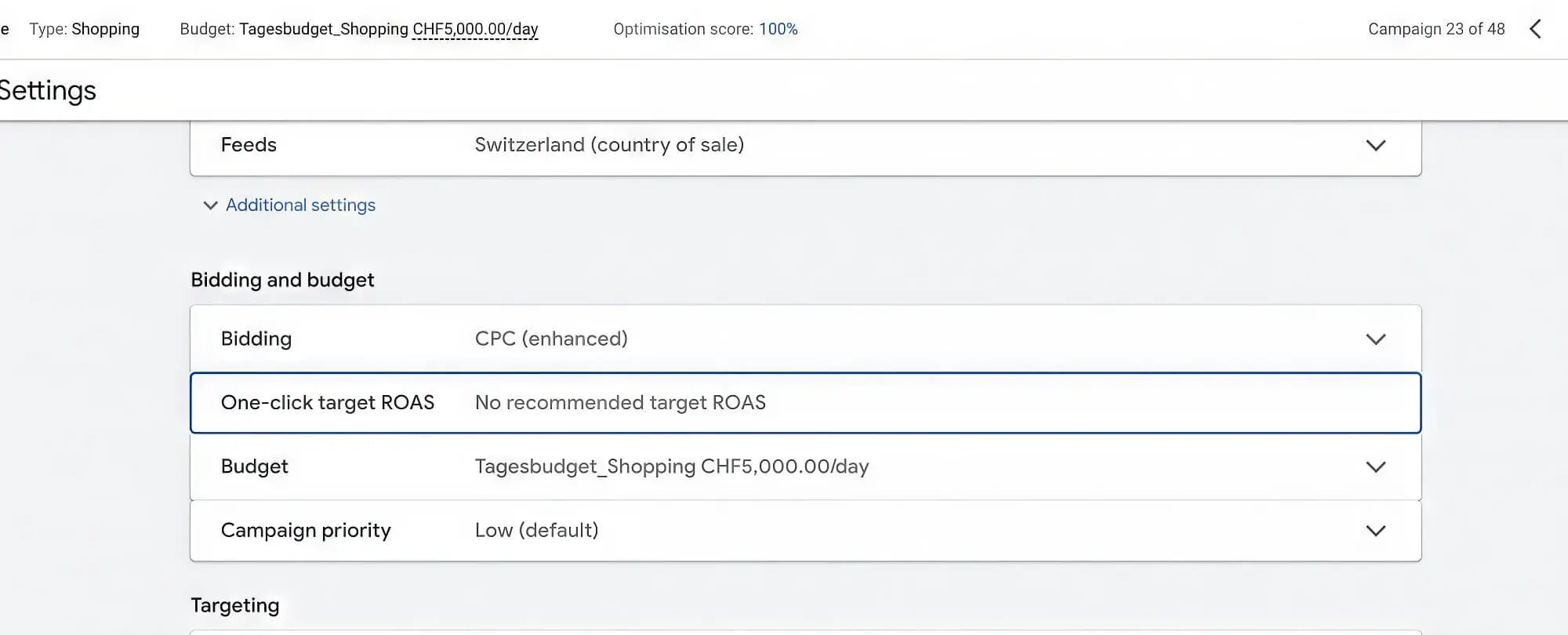
One thing to note here is that Google will specify a recommended target ROAS value if your campaign has generated sales in the past. You can use this recommended value or come up with a target value based on your research and business goals. If you pick the latter, then use a realistic Target ROAS derived from a baseline value.
C. Setting Up Target ROAS For Multiple Campaigns From “Bid Strategies”
The third approach is the most suitable if you wish to set up a Target ROAS strategy for several campaigns simultaneously. According to Google, it is known as a Portfolio Bid strategy, which is similar to a shared budget strategy.
To accomplish this task, click on the “Tools and Settings” icon in your Google Ads account and select “Bid strategies” under the “Shared Library” section. Then, click the “ ” button and select the Target ROAS bid strategy. After that, choose the campaigns where you want to use the strategy. Finally, enter the settings for the bid strategy and click “Save”.
When Should You Use Target ROAS?
The primary focus for using Target ROAS is to generate conversion values, which is the amount of revenues generated per transaction. If you run a business aiming to maximise revenues with each ad, you should definitely use this strategy.
With that in mind, such an automated bidding strategy is best suited for e-commerce businesses that have a specific RoI target in most cases. You can use this Smart Bidding strategy on different types of campaigns, such as Google shopping, search, and display campaigns.
That said, if your business does not focus on generating a direct ROI, you should avoid using Target ROAS. In that case, a more basic bid strategy is better.
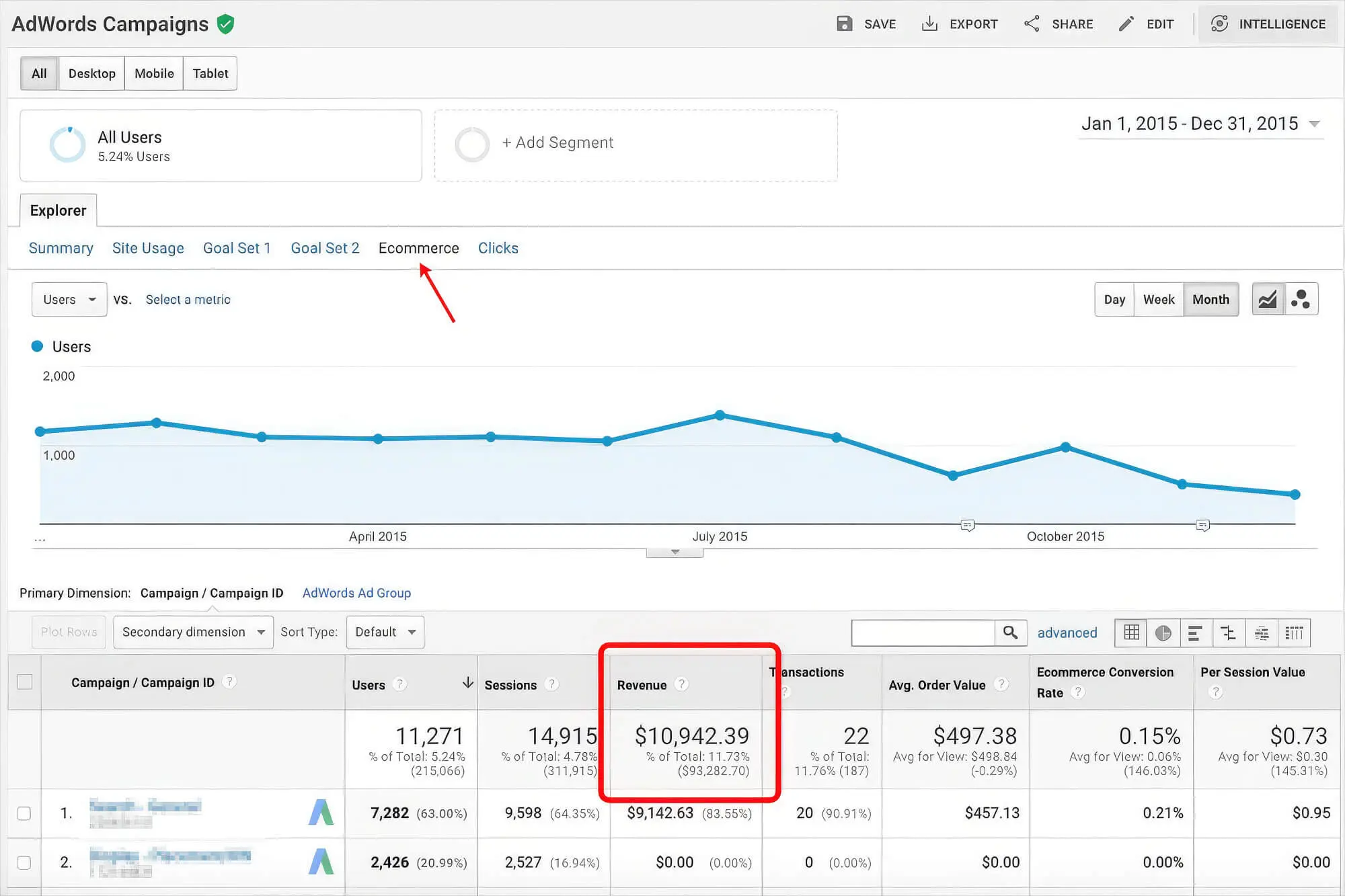
Many digital marketing experts also advise against using Target ROAS if you lack historical data. Automated bidding strategies like this rely on past conversion values to adjust bid limits effectively.
So, if you are setting up a brand new ad campaign, then it’s better to go with manual CPC strategies instead of Target ROAS. However, once the campaign has generated around 30 to 50 conversions, Google’s AI algorithms will have sufficient data to manage bids, making switching to this strategy easier.
Tips For Successfully Implementing Target ROAS
If you want to use Target ROAS optimally, follow the tips and best practices mentioned below.
1. Enable Proper Conversion Tracking
Before you set up the bidding strategy, you should enable conversion tracking for your Google Ads account and pay attention to how it is set up. Make sure to configure the system to consider purchases the primary conversion action. That way, it can generate relevant conversion data for Target ROAS.
2. Enable Target ROAS When There Is Sufficient Conversion Data
As we have stated before, an automated bid strategy like this requires a suitable amount of data to manage bids. Many advertisers make the mistake of implementing Target ROAS bidding too early in the campaign. In such a situation, a lack of enough conversion data often leads to unexpected results.
Therefore, we strongly advise that you refrain from implementing this strategy until the campaign has generated a decent amount of conversions. The more conversion data that is available, the better it will be.
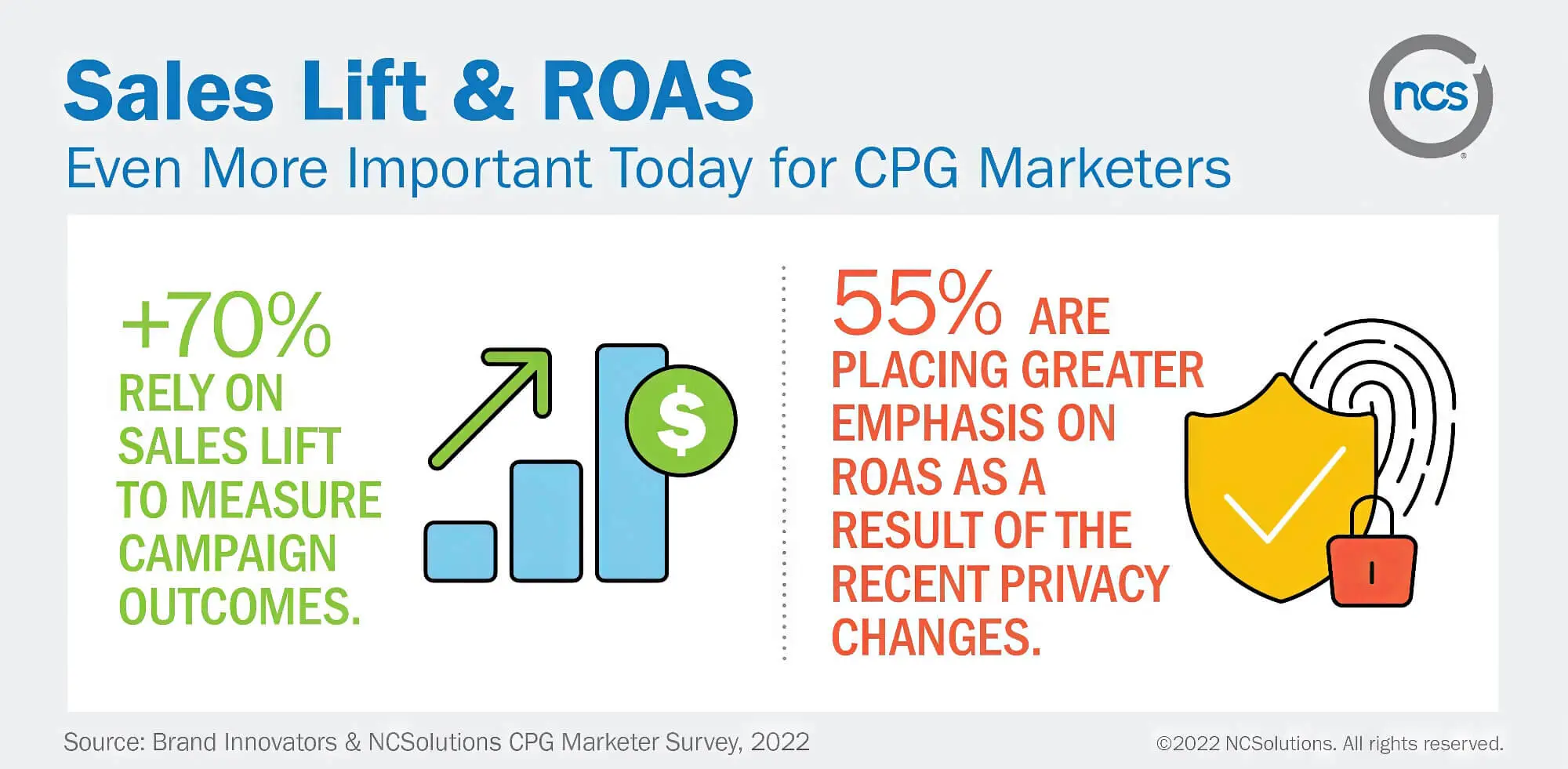
3. Begin With A Moderate Target For ROAS
Another mistake business owners make is becoming too aggressive with the target ROAS value. To maximise their profits, they may pick unrealistic targets that are much higher than the baseline ROAS recommended by Google. Consequently, the campaign yields poor results, eventually affecting the business goals.
Thus, it is a good idea to maintain a conservative approach when setting the target ROAS values. You can set a low target initially, but once there is sufficient data to optimise the bids, you can steadily increase the target ROAS.
4. Measure Campaign Performance Regularly
If you think your work is done after setting up a target ROAS strategy, you are mistaken. Market trends tend to change constantly in paid online advertisements, which means that regular monitoring and assessment are necessary.
So, make sure to check the performance of the bidding strategy frequently. If any issues or limitations arise, try to mitigate them as soon as possible. Also, if market trends shift, implement relevant changes quickly to maximise returns.
Hit Your Revenue Goals!
As you can see from the above discussion, implementing Target ROAS bid strategies can be highly beneficial for a business looking to maximise its revenues. However, if you are a complete newcomer to Google Ads, you may still feel sceptical about implementing it for your online retailing business.
While we fully understand your scepticism, it is not wise to lock your business out of such an attractive bidding strategy. That is why we have discussed how to implement it for your ad campaigns so that you can make the most of it.
If you’re still unsure, consider reaching out to a marketing expert like sitecentre®. They can help with your concerns and offer strategies for ongoing improvement to benefit your business.





